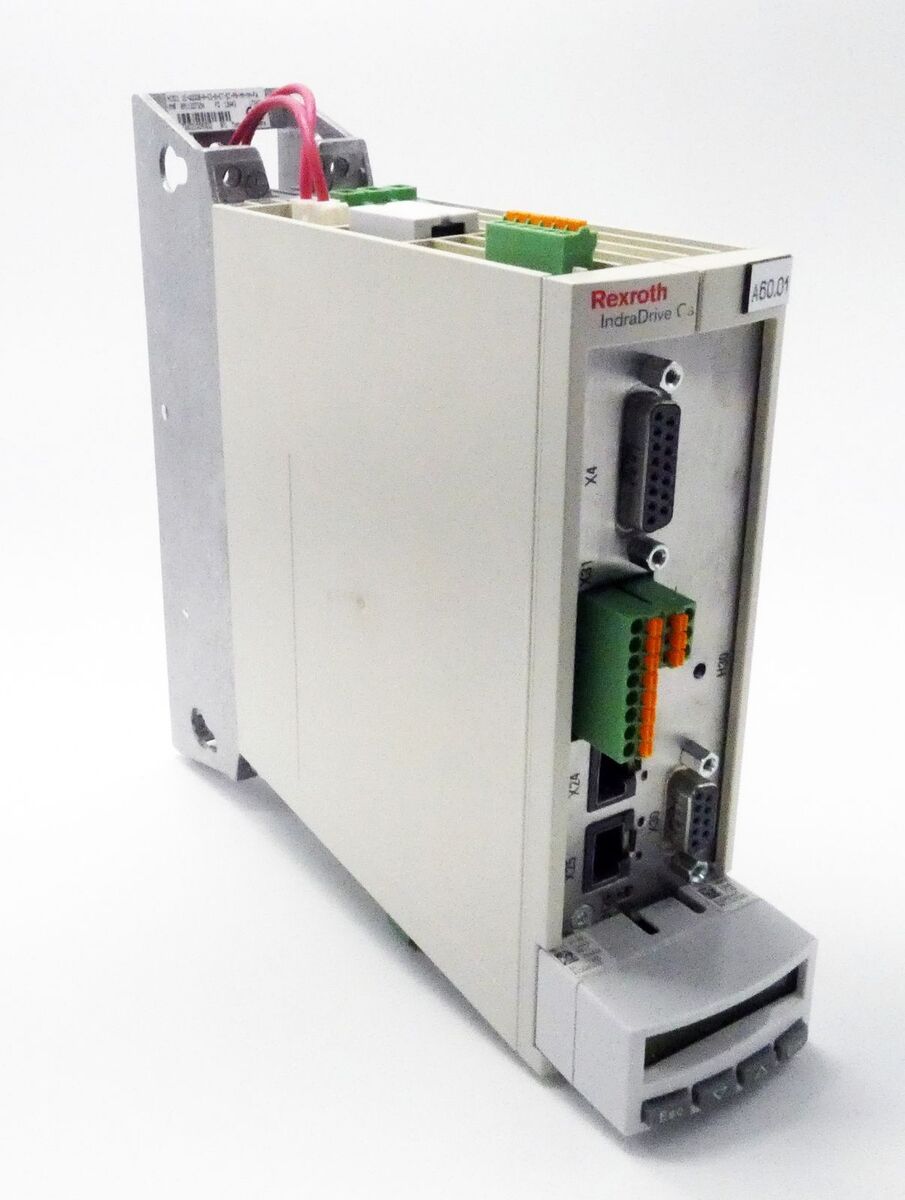
Troubleshooting Common IndraDrive C Fault Codes
Rexroth’s IndraDrive C series controllers are widely used in automated manufacturing environments requiring precise, real-time control of servo and synchronous motors. Despite their reliability, these drives can occasionally display fault codes that require attention. Whether you are commissioning a new system or diagnosing a legacy setup, understanding these common error codes can significantly reduce downtime.
This guide provides a reference overview of frequent IndraDrive C fault codes, what they typically mean, and general steps to help resolve them.
Top IndraDrive C Fault Codes
F200: Overtemperature
Meaning: The power section temperature has exceeded the allowable limit.
Common Causes:
-
Insufficient cooling or blocked airflow
-
Operation above rated ambient temperature
-
Damaged heatsink or fan
Remedies:
-
Check ambient temperature and ventilation
-
Clean filters and ensure proper air circulation
-
Replace failed fans or heatsinks if needed
F217: Overcurrent
Meaning: The output current has exceeded rated limits.
Common Causes:
-
Short-circuited motor leads
-
Incorrect motor configuration
-
Motor mechanical overload
Remedies:
-
Inspect motor wiring and continuity
-
Check motor nameplate data and verify parameter settings
-
Reduce load or check for mechanical binding in the drive system
F218: DC Bus Overvoltage
Meaning: The DC link voltage is too high.
Common Causes:
-
Regenerative energy not dissipated properly
-
Failed or missing braking resistor
-
Sudden deceleration of high-inertia loads
Remedies:
-
Check braking resistor wiring and resistance
-
Adjust deceleration ramp or use dynamic braking
-
Inspect bus capacitors and line filters
F219: DC Bus Undervoltage
Meaning: The DC link voltage is too low.
Common Causes:
-
Input supply interruption or brownout
-
Loose or faulty power connections
-
Power supply unit failure
Remedies:
-
Verify incoming line voltage is within specs
-
Inspect terminals and tighten all connections
-
Test with a known good power supply
F228: Motor Temperature Too High
Meaning: The motor temperature sensor has detected excessive heat.
Common Causes:
-
Continuous overload
-
Defective motor fan
-
Incorrect motor feedback or thermal model
Remedies:
-
Check load conditions and adjust current limit parameters
-
Inspect motor cooling system
-
Validate motor thermal parameters in the drive settings
F401: Parameter Checksum Error
Meaning: Internal memory checksum validation has failed.
Common Causes:
-
Power-up initialization error
-
Faulty parameter memory
-
Corrupted firmware
Remedies:
-
Reboot and reload firmware or parameter set
-
If persistent, contact service for EEPROM replacement or drive repair
F410: Encoder Fault
Meaning: Encoder signal loss or implausible feedback detected.
Common Causes:
-
Loose encoder cable
-
Signal interference or noise
-
Incorrect encoder type configured
Remedies:
-
Re-seat encoder cable connectors
-
Verify grounding and shielded cabling
-
Match encoder parameters in drive configuration
F802: Control Voltage Undervoltage
Meaning: Control voltage has dropped below safe operating levels.
Common Causes:
-
Faulty 24V supply or wiring
-
Excessive voltage drop due to long cable runs
-
Overloaded 24V circuit
Remedies:
-
Test voltage directly at the drive terminals
-
Upgrade to a higher-capacity or regulated supply
-
Reduce number of 24V loads in the circuit
General Troubleshooting Tips
-
Record the full error message and context (including load conditions, ambient temperature, and system behavior).
-
Use Rexroth’s IndraWorks software to access diagnostic logs and fault histories.
-
Always verify firmware compatibility and parameter backups before attempting firmware updates or resets.
-
Never perform repairs on live equipment. Always disconnect power before servicing the drive.
For more information or help selecting the right drive, contact PLG Automation:Email: sales@plgautomation.comPhone: 800-906-9271
